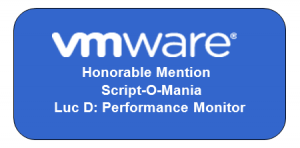As most of you should know VMware is organising a scripting contest, called Script-O-Mania. For those of you that haven’t submitted anything yet, hurry up. The closing date is tomorrow (March 15th 2010).
After some reflection I decided to go for a performance monitoring script. I wanted to have the vCenter client performance tab, without having to pay for the vCenter Agent license. And I wanted to offer some of the functionality that esxtop provided on the classic ESX systems.
That’s where my PSTop v1 script came to be.



